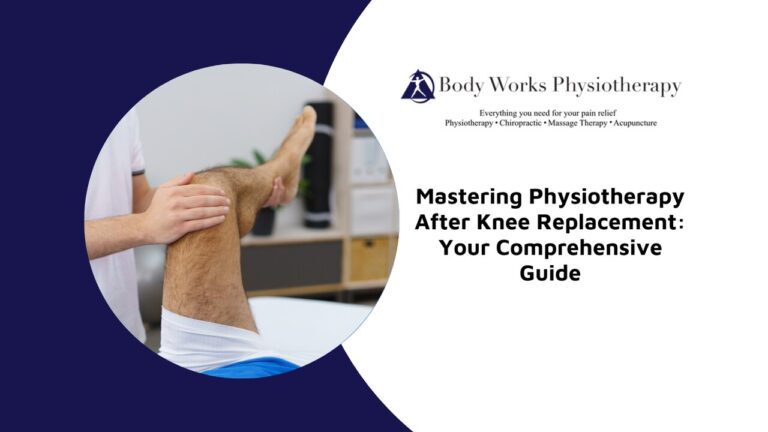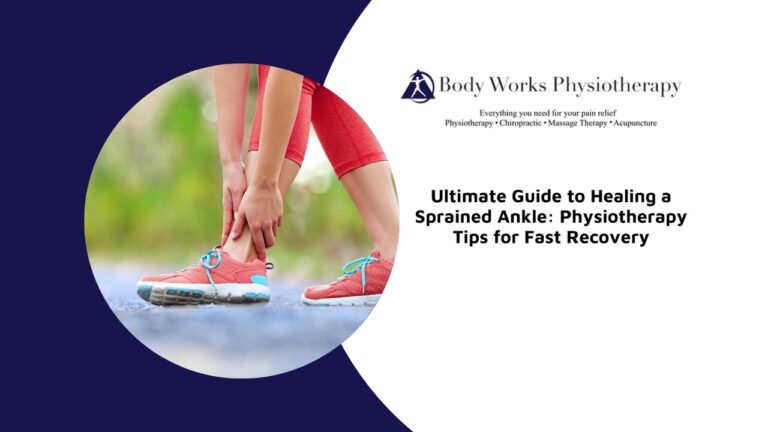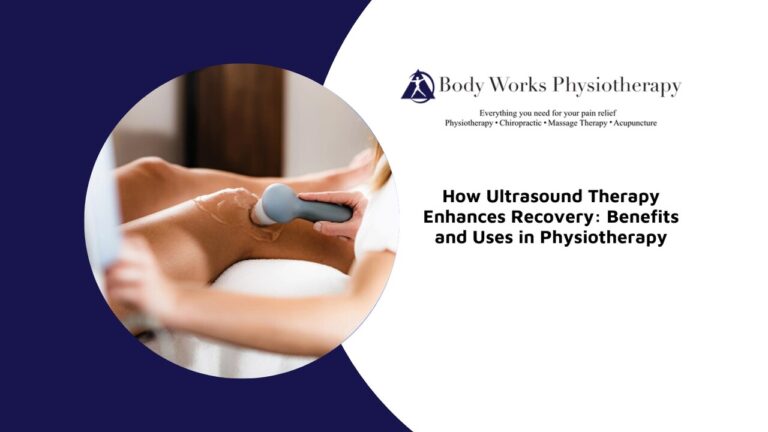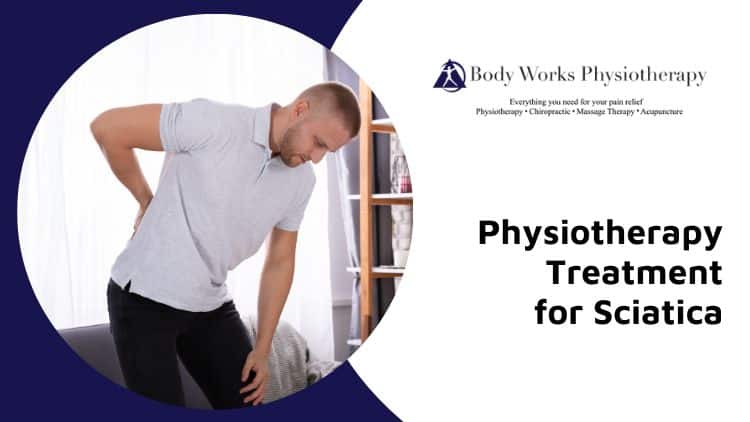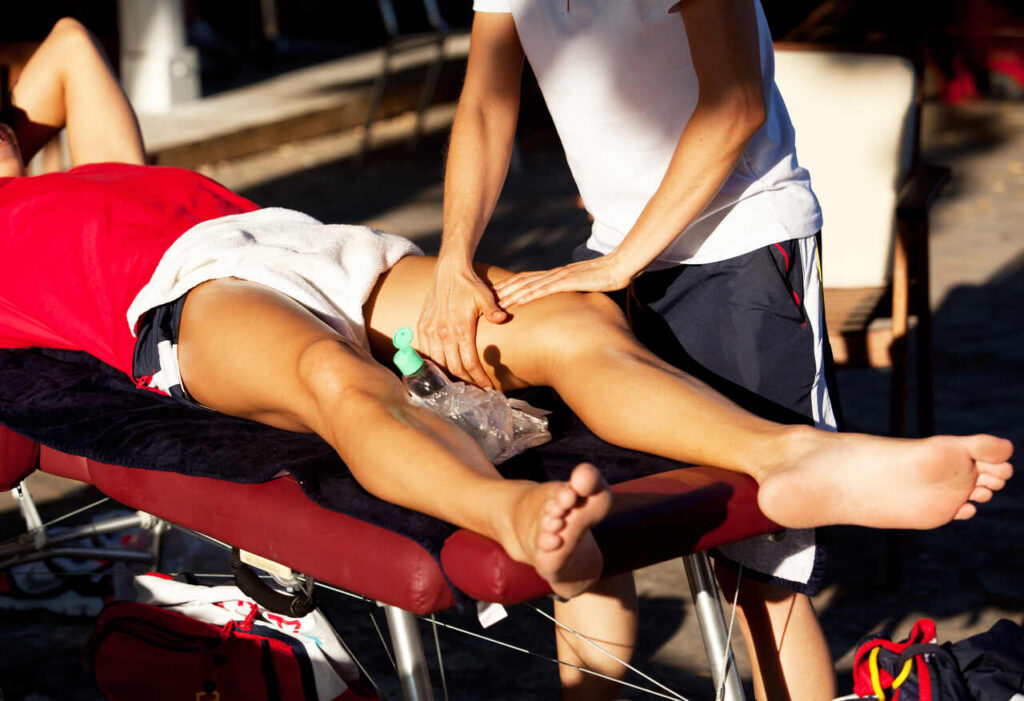
Sports physiotherapy has become an essential component for athletes of all levels, from seasoned professionals to recreational enthusiasts, aiming to stay active and injury-free. This specialized branch of physiotherapy focuses on preventing injuries, optimizing performance, and ensuring a faster, safer recovery from sports-related injuries. Sports physiotherapy offers personalized care tailored to the unique demands of each sport, supporting athletes in reaching their peak potential while protecting their bodies from the toll of physical activity.
Understanding Sports Physiotherapy: Benefits for Athletes
Sports physiotherapy is a specialized branch of physiotherapy focused on the assessment, treatment, and prevention of sports-related injuries. It benefits athletes by:
- Promoting faster recovery from injuries.
- Reducing the risk of re-injury through targeted exercises.
- Enhancing athletic performance by improving flexibility, strength, and mobility.
- Providing personalized rehabilitation programs tailored to the athlete’s sport and performance goals.
Whether you’re a professional athlete or a weekend warrior, sports physiotherapy ensures you stay active and injury-free.
Preventing Sports Injuries: The Role of Physiotherapy
Prevention is better than cure, and physiotherapy can be highly effective in helping athletes avoid injuries. Physiotherapists begin with biomechanical assessments to identify movement patterns that may increase injury risk. A sports physiotherapy program also strengthens weak muscles and corrects muscle imbalances that can lead to injury.
Your physiotherapist will design sport-specific warm-up routines to reduce strain on the body and teach proper form and technique to minimize stress on joints and muscles during activity. By incorporating these preventive strategies into training, athletes can perform at their best without risking injury.
Common Sports Injuries Physiotherapists Can Treat
Physiotherapists are skilled at treating a wide range of sports injuries. Some of the most common ones include:
- Sprains and Strains (such as Ankle Sprains): Common in sports with sudden movements, sprains (ligament tears) and strains (muscle/tendon injuries) benefit from strengthening and balance exercises to improve joint stability and prevent recurrence.
- Tendonitis (like Achilles or Patellar Tendonitis): Tendonitis, resulting from repetitive strain, is managed with controlled strengthening exercises to rebuild tendon resilience and reduce inflammation.
- Knee Injuries (e.g., ACL Tears, Meniscus Injuries): Knee injuries from pivoting or high-impact landings are treated with progressive exercises to restore knee stability, flexibility, and strength, tailored to the athlete’s activity.
- Shoulder Injuries (e.g., Rotator Cuff Injuries): Common in sports with repetitive shoulder motions, these injuries are treated with targeted strengthening and stability exercises to restore shoulder mobility.
- Shin Splints and Stress Fractures: Often seen in runners, shin splints and stress fractures are managed with calf strengthening, stretching, and a guided return to weight-bearing activities.
- Concussions and Post-Concussion Syndrome: Physiotherapists aid concussion recovery through balance and coordination exercises, ensuring safe return-to-play protocols.
Prompt physiotherapy intervention ensures a full recovery and prevents long-term complications.
Techniques Physiotherapists Use for Sports Injuries
Physiotherapists use a combination of advanced techniques to aid recovery and prevent injuries, including:
- Manual Therapy: Techniques like massage, joint mobilizations, and soft tissue release relieve tension, improve mobility, and reduce pain.
- Electrotherapy: Modalities such as ultrasound and electrical stimulation promote healing by enhancing blood flow and reducing inflammation in injured tissues.
- Exercise Therapy: Specific exercises target strength and flexibility, helping to restore function and resilience in injured muscles and joints.
- Taping and Bracing: Supports weakened or injured areas during activity, offering stability and reducing the risk of further strain.
- Biomechanical Analysis: Identifies faulty movement patterns, allowing for corrective exercises that optimize alignment and reduce injury risk.
These techniques help athletes recover faster, perform better, and stay injury-free.
Improving Athletic Performance: How Sports Physiotherapy Helps
Sports physiotherapy isn’t just for injury recovery—it can be a powerful tool to boost athletic performance. Through targeted stretching programs, physiotherapy helps improve flexibility, which enhances range of motion and reduces the risk of strains.
Physiotherapy also strengthens core muscles, providing greater stability and increasing both power and endurance during athletic activity. By addressing and correcting movement patterns, it optimizes energy efficiency, allowing athletes to perform with greater ease and less strain.
Additionally, with tailored recovery techniques, physiotherapy works to prevent muscle fatigue, helping athletes recover faster and train more effectively. For many, physiotherapy has become an essential part of their training routine, helping them reach new performance levels and stay competitive.
How Physiotherapists Design Rehabilitation Programs for Athletes
A physiotherapist tailors rehabilitation programs based on the specific needs of the athlete and the nature of the injury. Key steps include:
- Comprehensive Assessment: Evaluating the injury, biomechanics, and the athlete’s goals.
- Progressive Exercise Plan: Starting with light exercises to regain movement and gradually increasing intensity.
- Manual Therapy: Hands-on techniques such as massage and joint mobilization to promote healing.
- Sport-Specific Training: Preparing the athlete to return to their sport safely and confidently.
- Ongoing Monitoring: Adjusting the program based on progress and feedback.
This individualized approach ensures optimal recovery.
Physiotherapy for Sports Injuries: Healing Timelines
The recovery timeline varies based on the injury’s severity, the athlete’s commitment, and their overall health. On average, mild injuries such as muscle strains will take 2-4 weeks to heal. Moderate injuries like ligament sprains will take longer, between 6-8 weeks. Severe injuries, including ACL tears and others that may require surgery, can take as much as 4-9 months or more to heal properly. Working closely with a physiotherapist ensures recovery stays on track, with exercises tailored to each stage of healing.
Perform Like Never Before
Ready to take your athletic performance to the next level, recover from an injury, or safeguard yourself against future issues? At Body Works Physiotherapy in Scarborough, we’re dedicated to helping athletes like you stay active, healthy, and competitive. Our experienced physiotherapists offer customized programs designed around your sport, goals, and physical needs, ensuring you receive the targeted support essential for long-term success. Whether you need injury prevention strategies, a rehabilitation program, or performance enhancement techniques, we’re here to guide you every step of the way. Contact us today to start your journey toward optimal performance and resilience in sport.


